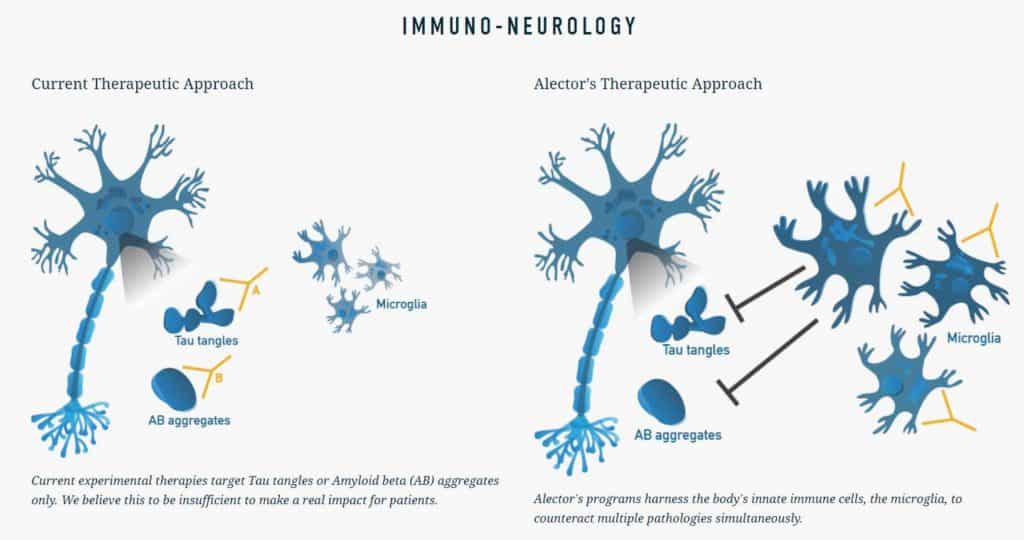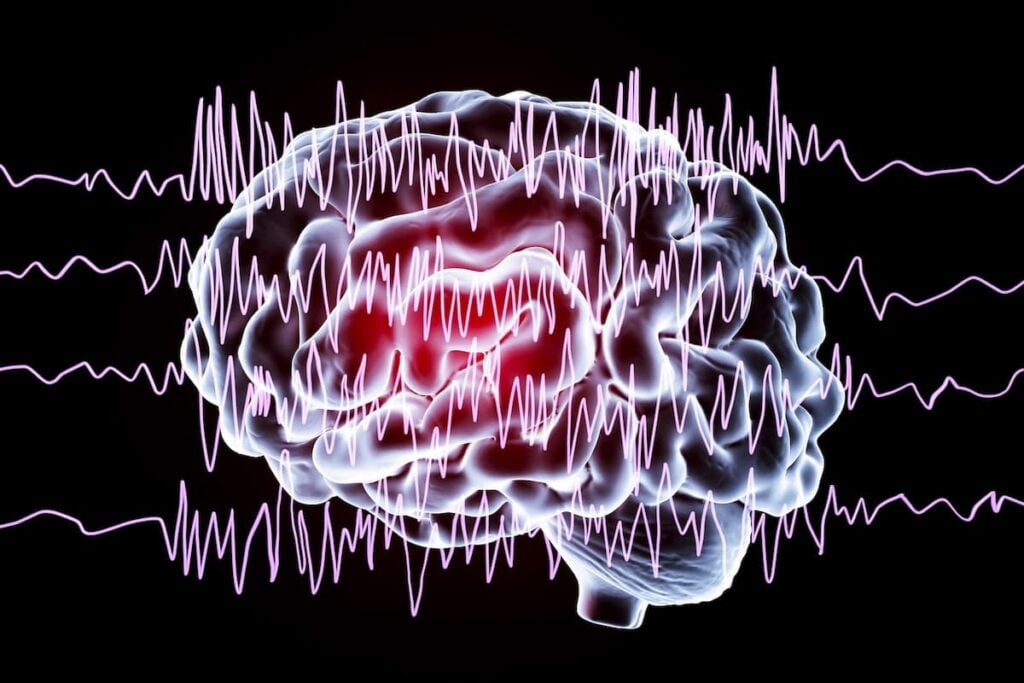6 Startups Searching for a Cure for Alzheimer’s
Table of contents
Table of contents
- The Richest 1 Percent
- Cause of Alzheimer’s Disease
- A Multi-billion Dollar Burden
- Immunotherapy Treatments for Curing Alzheimer's
- Targeting Bacteria to Cure Alzheimer's
- Finding a Cure for Alzheimer's Using Yeast
- Possible IPO in the Pipeline
- Hitting Alzheimer’s Disease in Early Stage
- Curing Alzheimer’s with Light Therapy
- Conclusion

Memory loss. Fatigue. Confusion. Behavior change. Alzheimer’s disease, or simply Alzheimer’s, is an incurable, crippling condition that starts with these tell-tale symptoms and ends in death three to eight years after diagnosis when your brain has turned into cauliflower. The disease is the most common form of dementia, making up 60 percent to 70 percent of all cases. If you’re keeping up with your Netflix binge list, you’ll remember it was featured in the 2014 film Still Alice where we watched Julianne Moore forget her to-do list for almost two hours. About 50 million people worldwide suffer from this condition, with 10 million more added to the roster each year and growing, according to the World Health Organization.

The total global cost of dementia in terms of healthcare and economic productivity is staggering and was estimated to be $818 billion in 2015. Searching for a cure for Alzheimer’s promises to be both disruptive and lucrative.
The Richest 1 Percent
The disease tends to hit women the hardest, with twice as many women diagnosed compared to men. Alzheimer’s also tends to be more of an issue with the middle and upper classes. A study by University of Cambridge showed that Alzheimer’s is highly correlated to populations in wealthy, highly urbanized, highly industrialized nations with good hygiene, with some researchers speculating that the illness might be initiated by bacterial inflammation brought on by underdeveloped immune systems that haven’t been exposed to microorganisms found in less hygienic environments. Better start penciling in those urban slum play dates for the kids before it’s too late.
Cause of Alzheimer’s Disease
The traditional model is that Alzheimer’s starts when a person loses the genetic lottery and inherits a set of genes that code for misshapen brain proteins called amyloid beta and tau. During the ripe years of youth when poor life decisions only cause minimal impact and regret, these defective proteins are usually broken down by the body and hardly cause any trouble. Most people are free of symptoms up until the ages of 60 to 70. When age, stress, and hard liquor catch up (sorry, MBAs), the body’s cleanup systems begin to slow down and these proteins begin building up into toxic plaques that slowly kill neurons through inflammation in the regions of the brain involved with speech, motor function, and decision-making. The process takes many decades to show up, though about 5 percent of the population is diagnosed with Early Onset Alzheimer’s at ages 40 to 50. Some companies are using artificial intelligence to detect Alzheimer’s before it hits, and even some brain interface companies are getting into the act.

Conservative treatments that target these protein plaques have shown mixed results, leading some medical researchers to look for alternative theories for how Alzheimer’s occurs. The search for a cure for Alzheimer’s has become something akin to the Wild West, as competing hypotheses continue to populate the scientific literature. With so many conflicting ideas on how to deal with Alzheimer’s, the great challenge has been finding the right target or targets that will reverse the effects of the disease. But we’ll leave the advanced theories to the bright minds of academia and medicine.
A Multi-billion Dollar Burden
Alzheimer’s may affect only a good 50 million people worldwide, with five million living in the United States alone, but the cost of treatment and care to alleviate symptoms throughout the progression of the disease have been huge. Healthcare costs have been estimated to be a whopping $277 billion annually in the United States, according to WebMD, and that doesn’t include unpaid healthcare by relatives. Some change lifestyles or even give up careers to help care for loved ones with Alzheimer’s. There’s plenty of people willing to shell out cash to make this problem go away.
So, let’s take a look at what’s brewing in the pipeline.
Immunotherapy Treatments for Curing Alzheimer’s


The recent round will push three of its antibody drug candidates into clinical trials. Two of those drug candidates are being co-funded and co-developed with large biopharma company AbbVie (ABBV) who has already paid Alector $200 million upfront with both companies agreeing to share global profits equally.
Targeting Bacteria to Cure Alzheimer’s
Founded in 2012, Cortexyme is another San Francisco-based company that’s pulled in $100 million from the likes of Pfizer and top VC firm Sequoia Capital. The latest Series B round brought in $76 million earlier this year to bring their lead drug candidate, COR388, through two Phase I studies. Unlike other companies that are developing technologies to target the misfolded proteins found in most Alzheimer’s patients’ brains, Cortexyme has designed COR388 as a narrow-spectrum antibiotic to inhibit a bacteria that’s been found to be involved in Alzheimer’s. The two clinical trials include a cohort of 40 patients aged 20 to 70 and 36 patients aged 55 to 80 years with Alzheimer’s to test the drug’s safety profile. The latest study will conclude in mid-October of 2018. The company has plans to move onto Phase II studies by next year.
Update 04/16/2019: Cortexyme has filed for an IPO to raise around $86 million.
Finding a Cure for Alzheimer’s Using Yeast

Possible IPO in the Pipeline


But it looks like Alzheon is pushing to refile an IPO for $40 million and will get another chance to conduct Phase 3 trials on ALZ-801. This time they plan to target a selective group of patients bearing genetic markers for a more specific subset of Alzheimer’s keeping their lead candidate in the game.
Hitting Alzheimer’s Disease in Early Stage
Founded in 2008, AgeneBio is a pharmaceutical company based out of Indianapolis that has raised a total of $11 million to date. The company is focused on developing treatments for mild cognitive impairment (MCI), a minor condition of memory loss that precedes dementia from Alzheimer’s and other neurodegenerative diseases. AgeneBio successfully ran a Phase II clinical trial in 2014 on 34 individuals with its lead therapeutic candidate, AGB101, for MCI. AGB101 was originally designed to treat epilepsy and has a well-characterized safety profile. The trial showed improved mental performance and memory after only a two-week course of the drug. Phase 3 trials are planned for 2018. A second drug candidate that’s prepared to enter Phase I trials, GABAA, is also still in the works.
Curing Alzheimer’s with Light Therapy

Conclusion
The long string of drug development failures at the Phase 3 clinical trial stage in the past 10 years has forced researchers to re-evaluate their approach to treating Alzheimer’s. The conventional hypothesis that Alzheimer’s is caused by amyloid plaques is being questioned. At any rate, university research continues to discover new causes for Alzheimer’s, including inflammation in the brain and disturbances in gut bacteria. The field is still ripe for discovery, and it shouldn’t be long before we see artificial intelligence and gene editing step up and help us find a cure for Alzheimer’s. When you’re in your golden years and all your bodily functions are giving out, you want to make sure you can at least remember the good old days.
Sign up to our newsletter to get more of our great research delivered straight to your inbox!
Nanalyze Weekly includes useful insights written by our team of underpaid MBAs, research on new disruptive technology stocks flying under the radar, and summaries of our recent research. Always 100% free.













